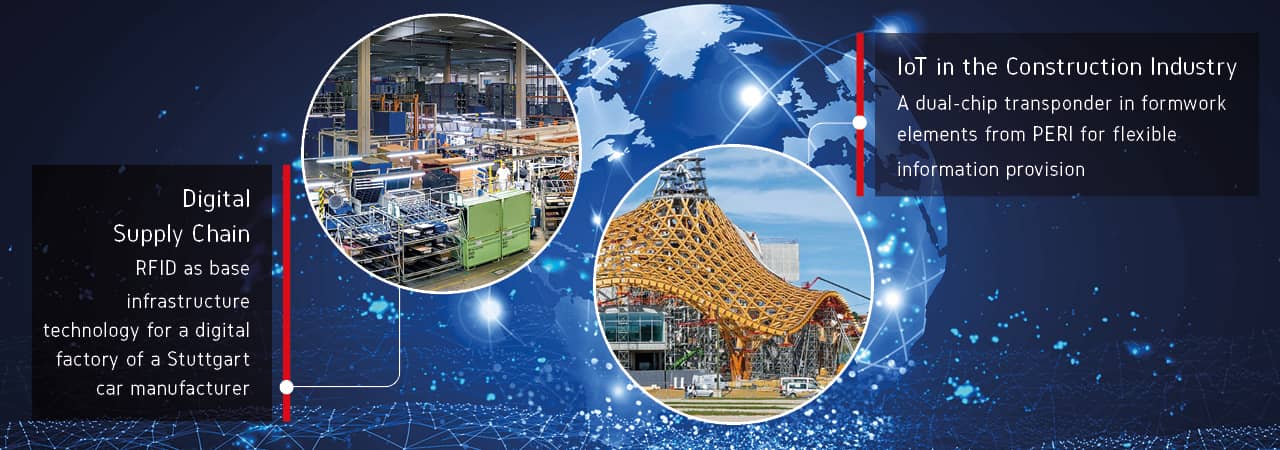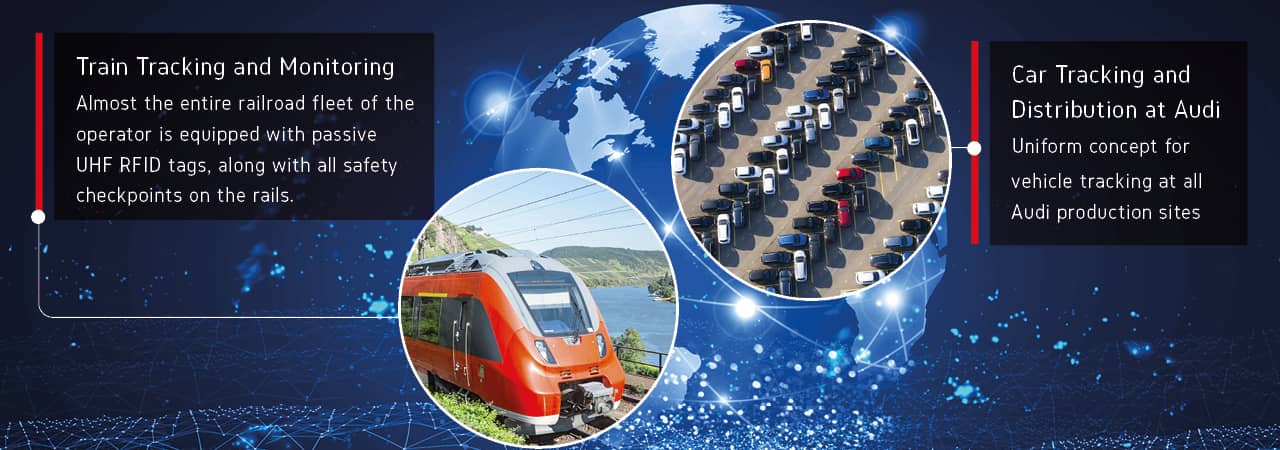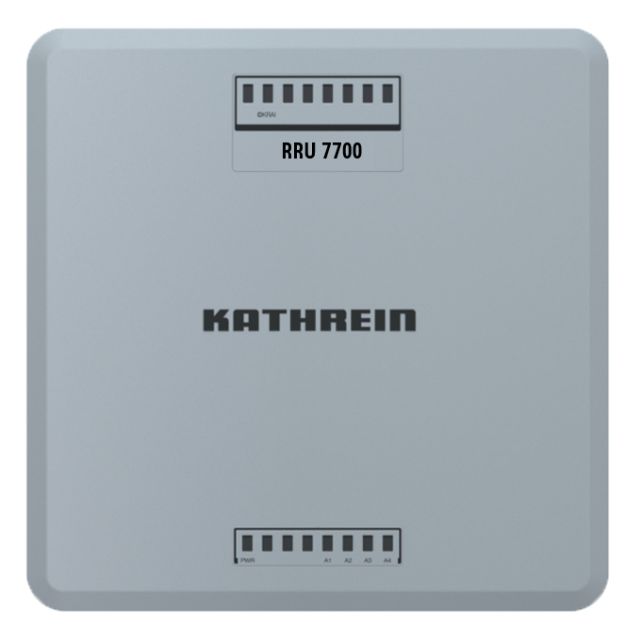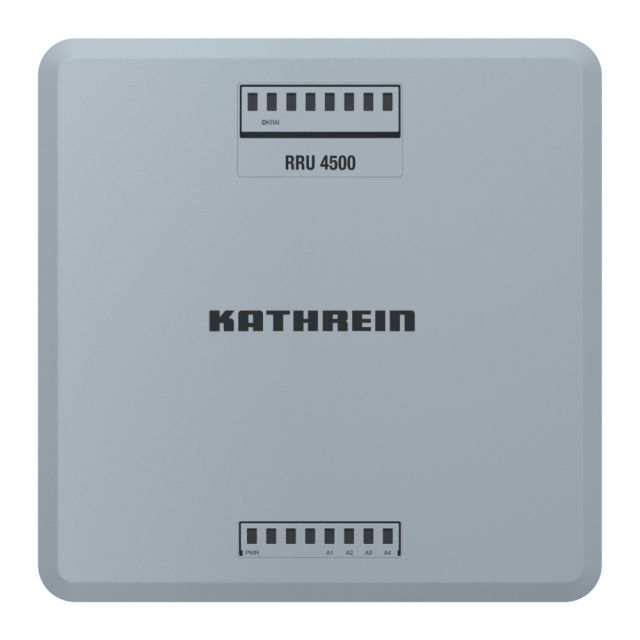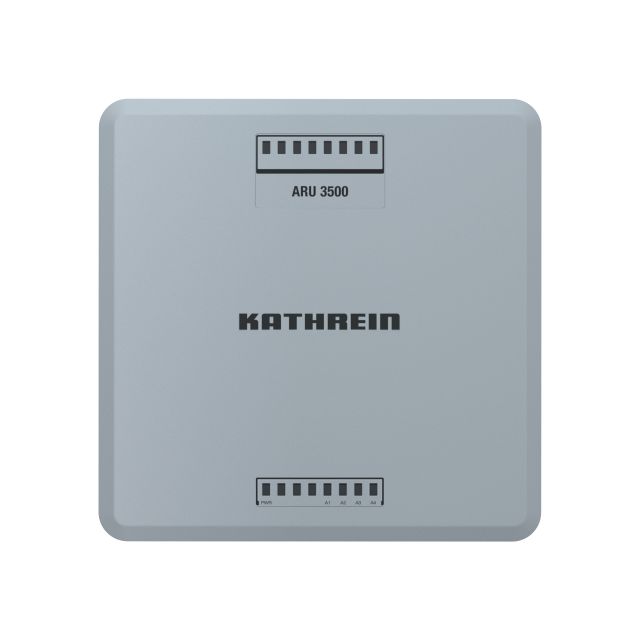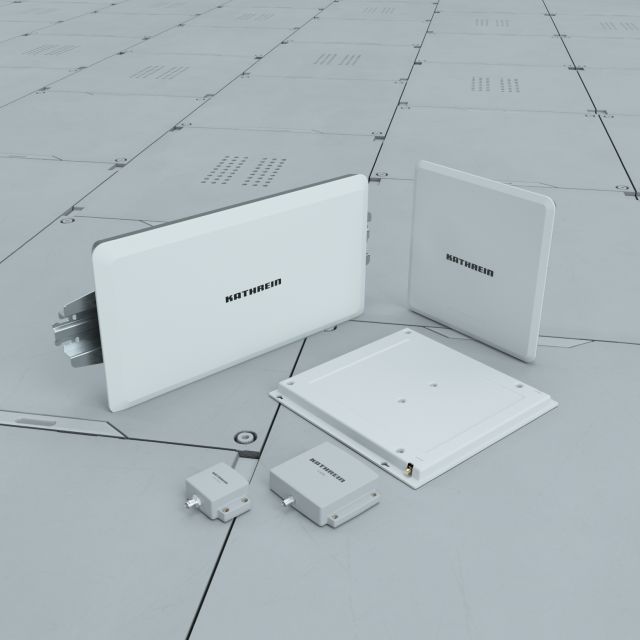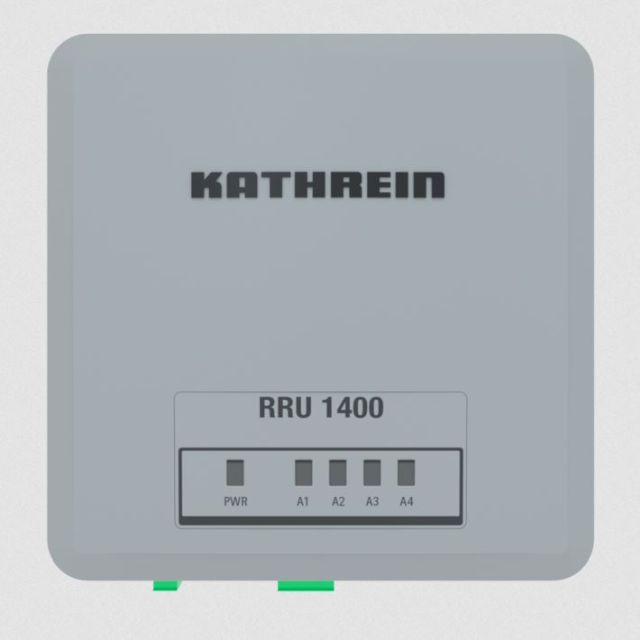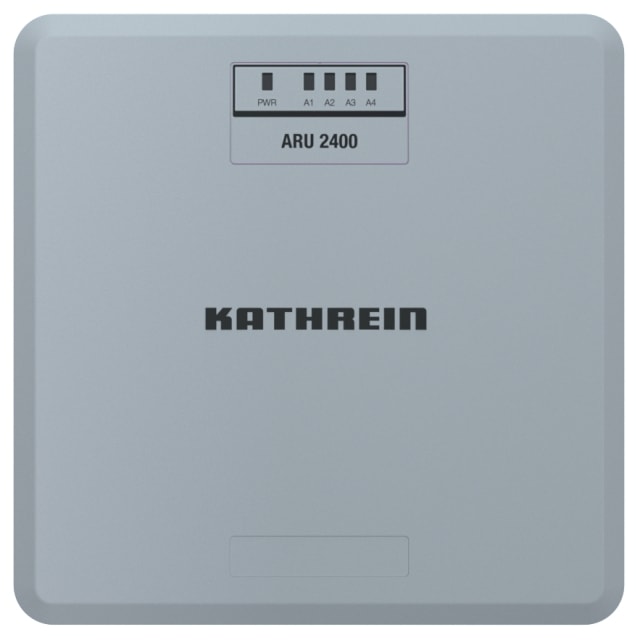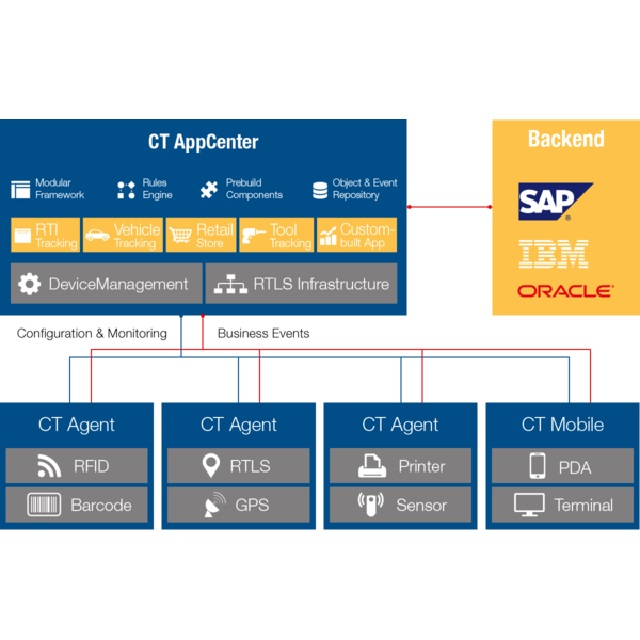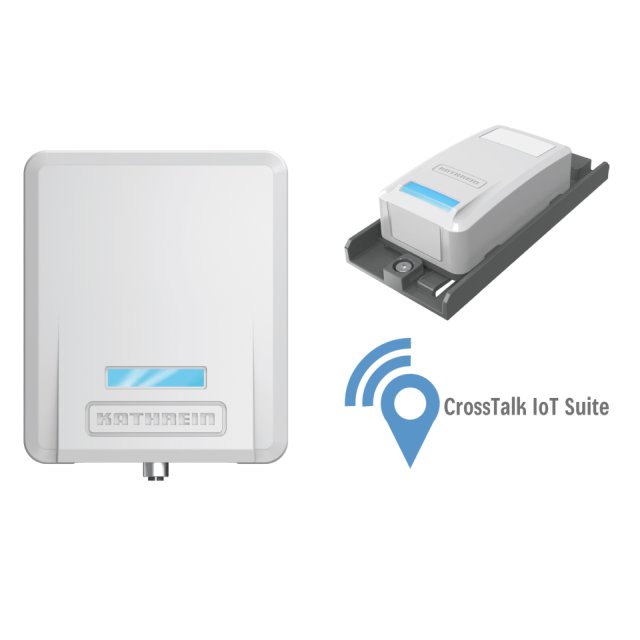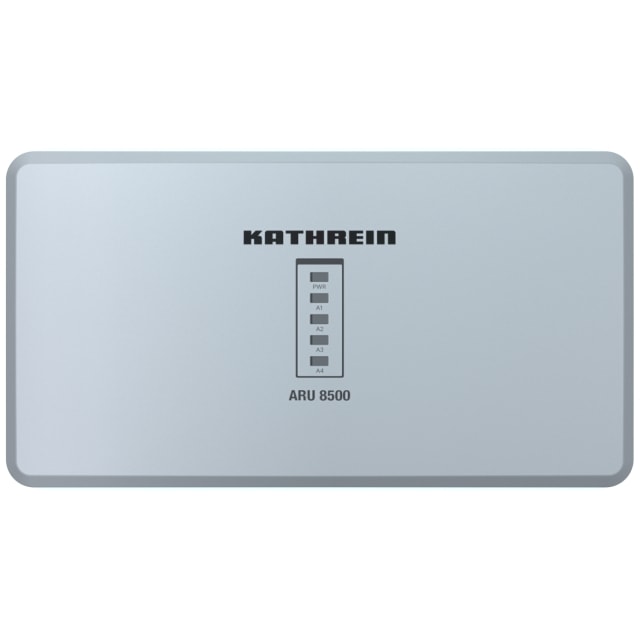RFID & Wireless IoT for the Construction Industry, Warehouse Logistics, Automotive Industry and Maintenance
RFID & Wireless IoT Global and Kathrein Solutions present an overview of four application cases.
First, the use of passive UHF RFID tags for the identification and monitoring of a railroad fleet and the rail network. Second, the transparent RFID-controlled vehicle tracking in the production facilities at Audi. Third, the digital supply chain in the factory of the future of a Stuttgart car manufacturer. Fourth, the dual-chip transponder, in cooperation with PERI, for contactless data acquisition in the construction industry.
Maintenance
Each Railcar Body Must be Clearly Identifiable
All security checkpoints should be traceable and identifiable. Since planning data – especially for international and freight trains – is not always up-to-date, the system to be installed must be able to uniquely identify each railcar body.
Availability of Rail Networks has the Highest Priority
Even minor incidents on rail networks can lead to disruptions in the transport system's timetable. To counteract this, security checkpoints are set up to measure parameters such as profile distance, wheel loads, heat, fire or chemical leakage. The challenge: To identify the measurements as accurately as possible down to an axle or wheel of a specific railcar body.
Since the planning data for compositions, especially for freight and international trains, is not always up-to-date, a system is required that uniquely identifies each railcar body. For this purpose, the axles passing the control point must also be identified, for instance time, speed and direction.
Data Can be Shared
Almost the entire railroad fleet of the operator is equipped with passive UHF RFID tags while the security checkpoints on each rail have been equipped with an RFID infrastructure. An external wheel sensor system is also integrated. The data can also be made available to other rolling stock owners as long as the coaches are equipped with passive UHF tags. ARU 3500 readers and the CrossTalk AutoID Suite are used. Configuration and monitoring is done via connected back-end systems.
Protect the Rail Network and Increase Availability
Increased accuracy when assigning measurements to a specific axle or wheel of a railcar. With this information, not only can problems – such as axles getting too hot or overloaded axles – be accurately assigned to a railcar body and axle or wheel, but the long-term trend of measurements at a security checkpoint can also be logged. Different points can be evaluated, for example, railcar bodies with axles or wheelsets. By making this information available to other rolling stock owners, the rail network can be protected and availability increased.
Advantage Overview
- Increased accuracy of measurements for specific axle or wheel
- Long-term trend and measurements are logged
- Preventive maintenance work is possible
- Rail network is protected and availability increased
Automotive
Excessive Search Effort and Lack of Transparency
At AUDI's production sites, distributed parking spaces and a changing infrastructure led to considerable search efforts for non-linear vehicles. A lack of transparency regarding the utilization of parking spaces and the existing control processes were labor-intensive and costly due to several system and media disruptions. For this reason AUDI decided to implement a uniform concept for vehicle tracking at all production sites.
Detection with RFID on Factory Parking Lots and Production Areas
When a vehicle passes an RFID reader, the ID number of the vehicle transponder is read and transmitted to the back-end system along with the direction recognition. The CrossTalk software, which is installed on each reader, interprets the reading events, filters out unnecessary data or incorrect readings and forwards the relevant information to the IT systems. The CrossTalk software simultaneously manages and monitors the status of the RFID hardware and readers.
RFID is used to capture data in the plant's internal parking lots and in the assembly production areas. When parking vehicles, the driver can also use a handheld reader to read the vehicle's transponder and manually enter or correct the parking space. Optionally, GPS coordinates can be recorded at certain locations and the vehicle reported to the IT systems with its exact position.
Manual Processes Eliminated
Since the system was put into operation at the individual plants, the transparency of vehicle management processes has increased significantly. The result: Significantly reduced search times and optimized use of existing resources and parking capacities. Processing times are shortened and work processes are made more efficient.
Advantage Overview
- Significant increase in transparency of vehicle management processes
- Reduced search times
- Optimized use of resources and parking capacities
- Shortened processing times and efficient work processes
Warehouse Logistics
Objective: Automated Supply and Marketing Chain
Specially modified RFID tags were to replace the traditional barcode-based systems. Localization and identification along the entire supply and marketing chain should be automated. The focus: Speed, a complete overview of complex processes and maximum focus on the customer.
Digitalizing the Supply Chain
A Stuttgart car manufacturer wanted to introduce RFID as the base infrastructure technology in its factory. The goal: To define the factory of the future and establish a digitalized factory. For automotive suppliers, RFID technology is a crucial criterion in the competition for future orders. Real-time insights should be created and transparency increased.
Customized KanBan Antennas
The automobile manufacturer relies on the use of certified RFID hardware components from Kathrein Solutions, as well as on a software solution for a simple and reliable supplier connection. All relevant positions in the supply chain of the "RFID end-to-end process" were equipped with certified RFID hardware. In some cases, this was specially adapted.
The requirements: A simple assembly, as well as an effective maintenance of the components. Process safety, reliability and cost effectiveness were the focus during the entire conception.
Automatic Material Retrieval
All acquisition components were linked with each other via standard software in order to enable a simple and stable data connection. The focus is on the intelligent load carrier. All load carriers are dispatched with RFID tags and unique identification numbers. Sorting in the crossdock as well as the transport is RFID-supported.
Incoming and outgoing goods, storage and retrieval, equipping of the route cars and supply at the assembly line are automatically controlled and documented. The empties on the assembly line are also automatically captured on the shelf via special KanBan antennas to enable automatic material retrieval.
Digital Production of the Future
Standardized RFID technology was adapted to customer-specific requirements. For example, the automated KanBan shelf was effectively and cost-efficiently implemented into the system landscape. The automobile manufacturer has created a template for a digitalized production of the future. Reduced waiting times and optimized process flows are the result.
Advantage Overview
- Effective and cost-efficient implementation in existing system landscape
- Template created for a digitalized production of the future
- Smooth and plannable process flows
- Reduced waiting times
Construction Industry
Transmission from the Slab Formwork
In 2019, PERI and Kathrein Solutions developed an RFID module to be incorporated into PERI's new product SKYMAX. The large-panel SKYMAX slab formwork has the motto "Fast and safe into the future with ease".
A long-lasting UHF/HF module from Kathrein Solutions, integrated into the formwork, makes it possible to collect module-specific data contactlessly during production, at locations as well as on construction sites worldwide, and to transmit this data via various technologies such as WLAN, wireless communication or Bluetooth in a secure and reliable manner.
A Step Towards the Future
The introduction of RFID in the new SKYMAX slab formwork system is driving IoT in the construction industry and the digitalization of construction. This development by PERI and Kathrein Solutions offers new possibilities for quality assurance and increased efficiency. The joint development of the transponder and the integration of the transponder module into the formwork element is a first step with UHF technology, which the companies will also transfer to other products as they work through close cooperation.
One Module, Two Frequencies
The dual chip transponder module combines an HF (NFC chip) with a UHF transponder chip together with an antenna embedded on a small FR4 board. The module is fixed into the PERI SKYMAX profile by means of a plastic carrier. The passive RFID chip can thus couple with the metal of the formwork profile and use it as an antenna.
Together with the dual-frequency transponder, the PERI SKYMAX slab formwork thus forms a product that can be identified by RFID everywhere and under all circumstances. Furthermore, the HF chip enables approved product-specific data to be viewed and used by anyone at any time, even with standard NFC-compatible smartphones.
Data Security and Visibility
Parallel to the development of the transponder and the design of the read/write system in production at the main site in Weissenhorn, the decision was also made to define the data structure according to international standards. Thus, PERI offers the possibility of using this data to all users, regardless of their location.
Advantage Overview
- Challenge: External influences on construction sites
- Longer lifespan of the transponder embedded in a plastic inlay
- Forgery protection and data security via coding options
- Use of standardized procedures (GS1)
- Rewritability of the transponder
- Processes can be designed "hands-free”
- Product identification independent of the hardware used



